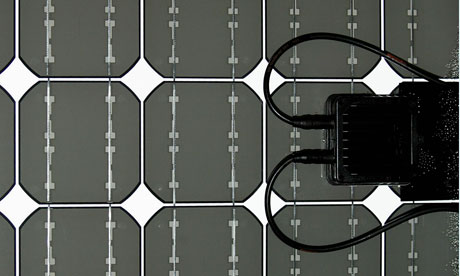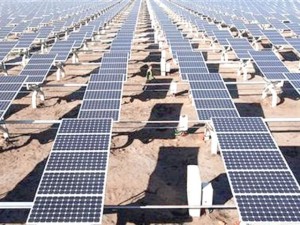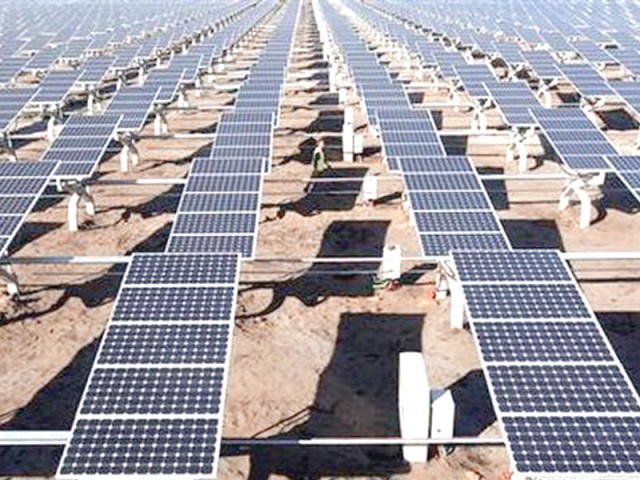Pakistan’s research on renewable energy has been severely hit by a lack of funds, experts say, forcing it to look abroad to import green technologies.
The country will aim to boost technology transfer from China and Germany for solar panels and wind turbines, and attract more investment for research and development (R&D), according to its five-year policy on renewable energy, which will be launched in August by the Alternative Energy Development Board.
Pakistan already has plans to generate 2,300 megawatts (MW) of electricity from solar and wind sources under an agreement signed last year (19 December) with China’s Wind Electric.

Pakistan aims for 5% renewable energy in its commercial sector by 2030. Photograph: Dan Chung for the Guardian
But some experts say that importing technology is only a short-term fix and that the government should invest more in developing local technologies.
“The funding in renewable energy technology research by the government of Pakistan is close to nothing,” said Masood Ahmed, head of the Sustainable Development Research Centre at the Shaheed Zulfikar Ali Bhutto Institute of Science and Technology.
There is a “serious need” for government funding to tap into the country’s huge potential in the sector and “resolve the deepening power crisis in Pakistan”, he said.
The main power resources in Pakistan are oil and gas, but reserves of both are expected to have run out by 2030, according to the state-owned Oil and Gas Development Company, and the country already faces an energy shortfall.
“Previous and present governments have shown that they are only interested in short-term solutions to the present energy crisis, as reflected in mere imports of renewable energy technology,” said Ahmed.
This shows that strengthening research in Pakistan’s renewable energy sector is not high on the government’s agenda, he added.
Pakistan’s universities have run pilot projects in areas such as fuel cells, biodiesel, ethanol fuel, innovative lighting systems, fuel cells for vehicles and biogas.
But they lack the funds to continue their research and roll out the technologies, according to Arshad Abbasi, water and energy advisor at the Sustainable Development Policy Institute (SDPI).
The new policy will set a target of generating five per cent of Pakistan’s total commercial energy from alternative and renewable energy sources by 2030.
It will offer financial incentives for projects including a manufacturing base for renewable energy plants and components, and will seek to develop the infrastructure for renewable energy programmes with help from the Asian Development Bank and the US Agency for International Development.
 Follow
Follow
